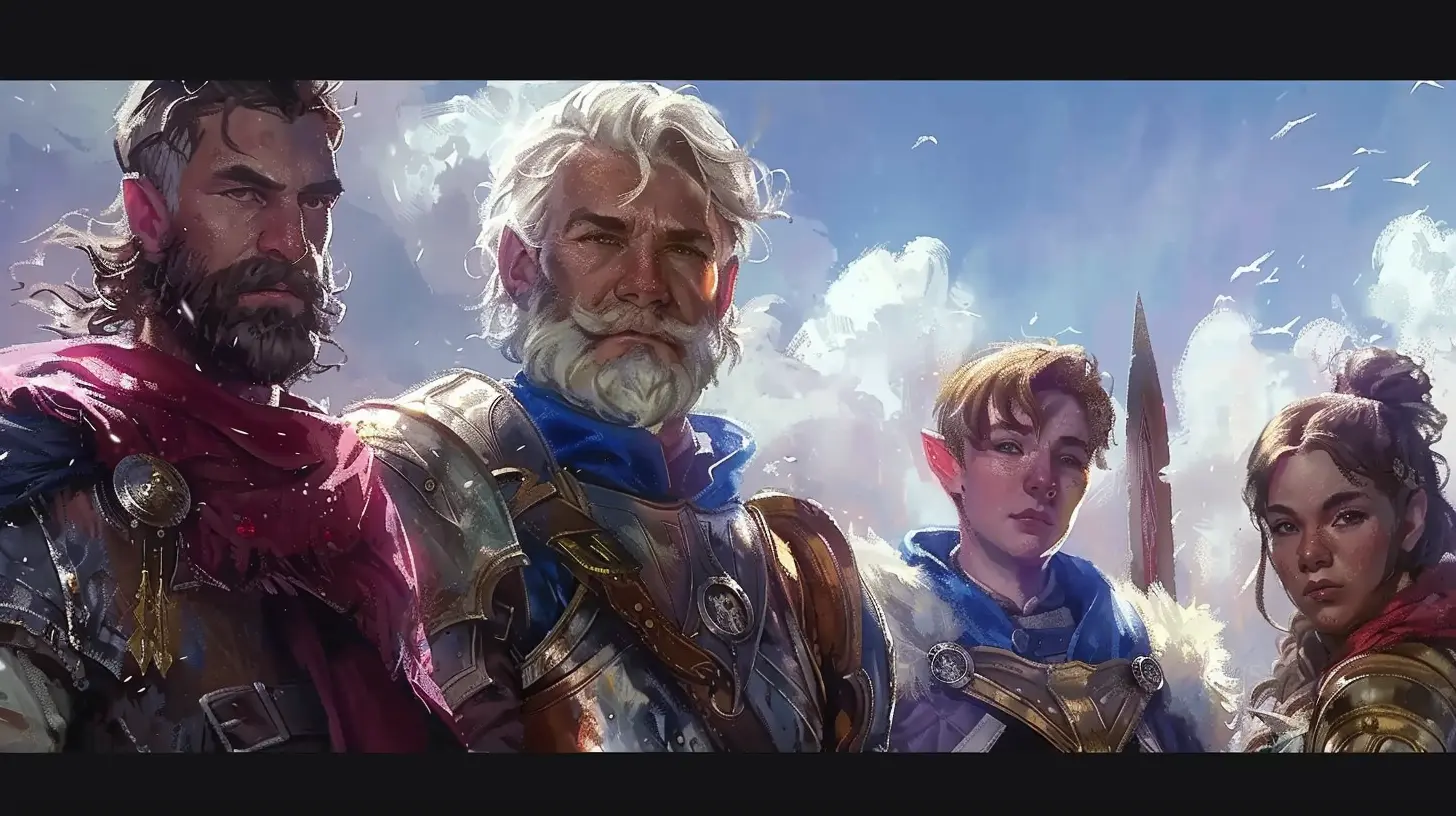The Power of Side Quests: How Small Stories Create Bigger Worlds
1 July 2025
Let’s be honest—when we dive into a new game, most of us are in it for the main story at first. Save the world? Check. Defeat the evil overlord? Absolutely. But somewhere along the way, we stumble across a lost dog, a haunted cabin, or a fed-up tavern keeper who just wants some peace and quiet. These are side quests, and they may not be the main attraction, but wow, do they add serious flavor.
Welcome to the world of side quests—those tiny tales within massive worlds that steal our attention and, quite often, our hearts.

What Exactly Are Side Quests?
Let’s break it down real simple. Side quests are optional missions or tasks in games that aren’t part of the main storyline. You don’t have to do them, but when you do, the world opens up in a whole new way.These quests might seem like distractions, but they’re actually bridges—bridges to deeper lore, emotional depth, and character development. Some are goofy and lighthearted, others are heart-wrenching and tragic. Either way, they’re mighty powerful in building a world that feels alive.

Why Do Gamers Love Side Quests?
Have you ever started a game intending to beat it quickly…only to find yourself helping every farmer, thief, and ghost in town?That’s the magic.
Side quests provide:
- Freedom: You’re not stuck on one linear path. Go off and explore!
- Immersion: The more you engage with the world, the more real it feels.
- Reward and Progression: Extra loot, XP, or maybe just a good laugh.
- Character Depth: Even the smallest NPC can have a story worth telling.
They let you live in the world—not just race through it.

Where Side Quests Really Shine
Let’s talk examples. Nothing drives the point home better than some legendary side content.The Witcher 3: Wild Hunt – A Masterclass in Side Stories
If you’ve played The Witcher 3, you probably spent more time chasing down contracts and helping villagers than following Ciri's trail. Remember the "Bloody Baron" questline? Technically a side quest, yet arguably one of the best-written, emotionally complex stories in gaming.This wasn’t just a “kill the monster” kind of deal. It delved into guilt, abuse, family, and redemption. The game made you feel something—and that’s priceless.
Skyrim – You Are What You Choose
You could ignore the main quest in Skyrim entirely and still have hundreds of hours of content. Want to become an assassin in the Dark Brotherhood? Go for it. Prefer to lead the Thieves Guild? Be their Robin Hood. Or maybe you just want to chase butterflies and adopt a kid.These aren't just distractions—they're role-playing opportunities. They shape your dragonborn into someone you define. That’s powerful storytelling right there.
Red Dead Redemption 2 – Human Stories in a Harsh World
In RDR2, some of the most memorable moments come from random people you help on the road. That injured guy you save? He might repay you later. That sketchy stranger with a snakebite? Your choice affects your reputation.Rockstar didn’t just build a game; they built a society—and your actions ripple through it, especially via side quests.

How Side Quests Enrich the Main Story
Here’s the twist: the more side quests you do, the more the main story hits home. You see the world suffer. You meet its people. You understand its culture. By the time the final battle comes around, you’re not just fighting for an abstract goal—you’re fighting for them.It’s like reading the footnotes of a massive novel. You don’t need them to follow the plot, but with them, the tale becomes richer, deeper, and more meaningful.
The Emotional Weight of Optional Content
Some side quests can absolutely break you. Ever played a game where you helped a character only to face a tragic ending later? Yeah, it's rough. But it matters. These moments stay with you long after the credits roll.That’s because side quests do something unique—they catch you off guard. You go in expecting a fetch quest and leave emotionally wrecked. It’s storytelling ninja-level stuff.
Example: Final Fantasy VII Remake – The Personal Touch
The Remake doesn’t just follow Cloud’s story. It lets you spend time with people like Jessie and Tifa in side missions. You know them better. So when things go south? You feel it more. That’s the beauty of emotional buildup through optional content.
Side Quests Give Players Control
Let’s face it, we all want to feel like our choices matter.Side quests hand us the steering wheel. Unlike the main story, which often has a predetermined endpoint, side content lets you dictate the narrative pace. Want to spend the next few hours hunting rare items? Go ahead. Feel like diving into an NPC’s love story? Do it.
It’s your game, and side quests make sure it feels that way.
Narrative World-Building Through The Back Door
Games are a form of interactive storytelling, and side quests serve as back-door entries into the world's soul. Developers hide cultural gems, local legends, political undertones, and mythical creatures within these missions.You're not just doing chores; you're unearthing history and myth. And with each quest, the world becomes more than pixels—it becomes a place.
Think of it Like a Mosaic
The main story gives you the outline, sure. But side quests? They fill in the dazzling colors. They’re the tiny tiles that, when pieced together, show you the entire masterpiece.
Not All Side Quests Are Created Equal (And That’s Okay)
Let’s be real—some side quests are just… meh. Collect 20 herbs? Pass. Escort this slow NPC across the map without sprinting? Yawn.But even these “filler” quests have their place. They give pacing, variety, and sometimes even comic relief. Plus, they can be great for just zoning out with some lo-fi gaming vibes.
The Future of Side Quests
As games become bigger, better, and more immersive, side quests are getting the love they deserve. Developers are now treating them like mini-movies—complete with dialogues, cut scenes, and impactful choices.We’re moving into an era where side quests aren’t just optional—they’re integral. They’re what make gamers stay longer, care more, and talk about a game long after it’s finished.
Upcoming Games to Watch
Games like Fable, Avowed, and The Elder Scrolls VI are already teasing rich, reactive worlds. And you can bet side quests will play a big role in making those worlds feel real.
How to Get the Most Out of Side Quests
Feeling inspired to tackle more side quests in your next playthrough? Here's how to make them work for you:- Don’t Rush: Take your time. Side quests are crafted to be enjoyed, not speed-run.
- Talk to Everyone: Sometimes a simple conversation opens up a world of content.
- Think Like a Local: Immerse yourself. Explore the culture, listen to the music, read the books!
- Role-play It: Make decisions based on your character’s personality, not just rewards.
- Keep Track: Use journals or in-game logs to follow long quest chains—they often have surprising payoffs!
Final Thoughts: Small Stories, Massive Impact
In the end, side quests remind us that in gaming—and in life—it’s not just about the destination. It’s about the journey, the detours, the people we help, and the stories we collect along the way.Sure, the main quest might save the world, but the side quests? They show us why it’s worth saving.
So the next time you’re tempted to skip that optional mission, maybe stop and think: what door could this little side story open? You might just stumble on a moment that changes everything.
all images in this post were generated using AI tools
Category:
Role Playing GamesAuthor:

Stephanie Abbott
Discussion
rate this article
2 comments
Grey Edwards
This article insightfully highlights how side quests enrich the gaming experience, offering players deeper engagement and emotional investment. By weaving personal narratives, developers create expansive worlds that feel alive and immersive.
October 15, 2025 at 2:37 AM

Stephanie Abbott
Thank you for your thoughtful comment! I'm glad you found the article resonant in showcasing how side quests enhance player engagement and immersion.
Fay Cox
Absolutely! Side quests are like sprinkles on a cupcake—small, but they make everything sweeter!
July 12, 2025 at 3:43 AM

Stephanie Abbott
Thank you! I love that analogy—side quests truly enhance the main journey, adding depth and joy to the experience.


